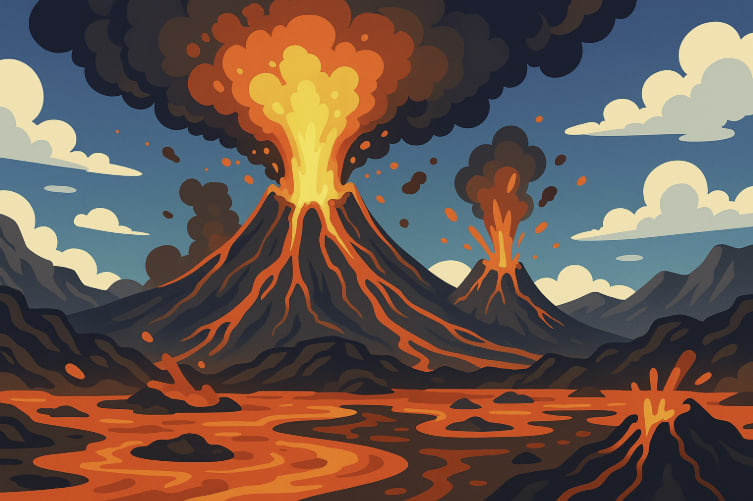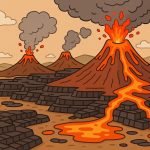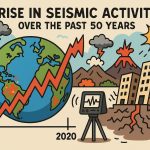The Siberian Traps erupted around 252 million years ago, coinciding with the Permian-Triassic extinction — the most devastating mass extinction the planet has ever experienced. But what triggered these eruptions? And could something like this happen again?
Why Did the Siberian Traps Erupt?
1. A Mantle Plume from Deep Within Earth
The leading theory is that a mantle plume — a giant column of hot rock rising from deep within the Earth’s mantle — reached the base of the Earth’s crust. When this intense heat melted the crust, it led to colossal volcanic eruptions, covering over 2 million square kilometers with lava.
2. Massive Flood Basalt Eruptions
Unlike a single volcano eruption, the Siberian Traps involved fissures and cracks in the Earth that poured out basaltic lava in vast sheets. These flood basalts built up over hundreds of thousands of years, creating thick step-like rock layers still visible today.
3. Gigantic Emissions of Greenhouse Gases
The real catastrophe came not just from lava, but from the release of:
- Carbon dioxide (CO₂)
- Methane (CH₄)
- Sulfur dioxide (SO₂)
These gases caused:
- Global warming
- Ocean acidification
- Oxygen depletion in oceans
- Possible ozone layer damage
Lava flows also cooked underground coal and salt deposits, releasing toxic compounds like mercury and even more methane.
Could It Happen Again?
1. Mantle Plumes Still Exist
Mantle plumes are not extinct. Today’s hotspots — like those under Hawaii, Iceland, or Yellowstone — are thought to be fueled by smaller plumes. However, they are not nearly as powerful as the one responsible for the Siberian Traps.
2. Other Large Igneous Provinces (LIPs)
Siberian Traps belong to a category called Large Igneous Provinces (LIPs). Others include:
- Deccan Traps (India, 66 million years ago)
- Karoo LIP (Southern Africa, 180 million years ago)
- Columbia Plateau (USA, 17 million years ago)
These also affected global climate and ecosystems but didn’t cause extinctions as massive as the Permian one.
3. Probability of Recurrence
Geological evidence suggests:
- Events of this scale occur roughly once every 200–300 million years
- They are rare but possible
- There’s no immediate danger, but future mantle plumes cannot be ruled out
What If It Happened Today?
If an eruption of Siberian Traps scale occurred now:
- Global temperatures could rise by 5–10°C
- Mass extinction in oceans could occur
- Agriculture would collapse due to climate shifts, acid rain, and pollution
- Global ecosystems and weather systems would change drastically
Such an event would threaten modern civilization and global biodiversity. Humankind will face almost total extinction if it would happen in the nearest future.
Conclusion
The Siberian Traps show how Earth’s interior processes can reshape the entire biosphere. Though extremely rare, these kinds of supervolcanic events have happened before and could happen again — reminding us of the fragility of life and the power of planetary forces far beyond human control.
Glossary
- Siberian Traps — A massive region of flood basalt in Siberia formed around 252 million years ago.
- Mantle plume — A rising column of hot rock from deep within the Earth that can cause large volcanic eruptions.
- Flood basalt — A large-scale lava flow that spreads out in sheets rather than erupting from a single cone.
- Large Igneous Province (LIP) — A huge region formed by massive volcanic eruptions over a relatively short geological time.
- Greenhouse gas — Gases like CO₂ or methane that trap heat in Earth’s atmosphere.
- Ocean anoxia — A condition where oceans lose their oxygen, leading to marine die-offs.


